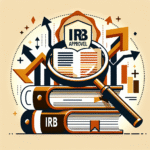
Introduction
Imagine conducting a study that aims to understand the factors influencing student performance. You’ve collected a plethora of data, yet you’re unsure what to focus on—the relationship between study habits and grades, or the impact of social interactions on learning outcomes? Herein lies the crux of social science research: identifying dependent variables. The art and science of identifying dependent variables in social science research is crucial for cultivating meaningful insights.
In today’s world, where data is abundant, the clarity of your research findings hinges on your ability to identify the right dependent variable. This not only shapes the direction of your inquiry but also impresses upon stakeholders the value of your results. In this article, we’ll delve into the multi-faceted nature of dependent variables in social science research, exploring their significance, techniques for identification, and practical applications through real-world case studies.
What are Dependent Variables?
Before diving deeper, let’s clarify what dependent variables are. In the realm of research, a dependent variable is the outcome or effect that researchers seek to explain or predict, often influenced by independent variables. Whether it’s behavior, attitude, or measurable performance, understanding what constitutes a dependent variable is foundational to any research undertaking.
Examples of Dependent Variables
| Research Field | Dependent Variable |
|---|---|
| Education | Student Performance |
| Psychology | Emotional Well-being |
| Sociology | Community Engagement |
| Economics | Consumer Spending |
| Health Research | Patient Recovery Times |
Each of these examples illustrates how dependent variables fluctuate based on various influencing factors, showcasing their paramount significance in research design.
Why Identifying Dependent Variables is Critical
1. Guides Research Design
Correctly identifying the dependent variable provides a clear focus for the research. It informs the choice of methodologies and determines how data will be collected and analyzed.
2. Facilitates Data Analysis
Understanding the dependent variable allows researchers to employ suitable statistical methods, ensuring that findings are valid and reliable.
3. Shapes Interpretation of Results
When the dependent variable is accurately defined, interpreting results becomes more straightforward, leading to credible conclusions that can influence policy or practice.
4. Enhances Communication
Clearly articulated dependent variables foster better communication of results to stakeholders, which is essential for garnering support and driving social change.
The Art of Identifying Dependent Variables
While the concept of dependent variables might seem straightforward, the “art” lies in identifying which variables hold the most water in a particular research context. Here are some techniques and considerations to navigate this intricate process:
1. Align with Research Questions
Your research question serves as a compass guiding your study. Ask yourself what you truly want to discover. If your inquiry revolves around the relationship between stress and performance, then “performance” becomes your dependent variable.
2. Engage with Existing Literature
Exploring existing studies related to your theme can provide insights into what dependent variables other researchers have identified. For instance, if examining the impact of remote work on productivity, past research may highlight “productivity” as the dependent variable.
3. Pilot Studies
Conducting pilot studies can help refine your dependent variables. Here, smaller-scale experiments can yield preliminary data, shedding light on which factors are most relevant to your primary research.
4. Conceptual Frameworks
Utilizing conceptual frameworks can provide clarity in identifying dependent variables. These frameworks allow researchers to outline the relationships among various factors clearly.
5. Stakeholder Input
Consulting with stakeholders can yield fresh perspectives on what constitutes relevant dependent variables. Their insights can help align research questions with real-world concerns.
Case Study: The Education Sector
Case Study Overview: A team of researchers aimed to understand the effects of active teaching methods on student engagement.
Dependent Variable: Student engagement (measured through attendance, participation, and feedback).
Findings: The study concluded that active teaching methods significantly increased student engagement, thus highlighting the importance of the identified dependent variable.
This case study illustrates how proper identification of the dependent variable allows for impactful findings that can inform educational practices.
The Science of Identifying Dependent Variables
Moving beyond the art, the "science" aspect encompasses a systematic approach to selecting dependent variables. This involves employing statistical and methodological tools to ensure precision.
1. Operationalization
Turning abstract concepts into measurable terms is critical. For instance, if your dependent variable is “happiness,” operationalizing this may involve using specific scales like the Satisfaction with Life Scale (SWLS).
2. Measurement Techniques
Using reliable and valid measurement techniques is essential. Common tools for measuring dependent variables include surveys, interviews, and observational methods.
| Measurement Type | Description | Example |
|---|---|---|
| Surveys | Self-reported data | Job Satisfaction Survey |
| Observations | Direct monitoring | Classroom Behavior Checklists |
| Archival Data | Records from pre-existing data | National Health Surveys |
3. Statistical Analyses
Using the correct statistical methods to validate findings is paramount. Techniques such as regression analysis help understand the relationship between dependent and independent variables.
Case Study: Public Health Research
Case Study Overview: A study aimed to assess the impact of diet on heart health.
Dependent Variable: Instances of heart disease.
Findings: Researchers found a direct correlation between high saturated fat intake and increased heart disease rates. By effectively identifying the dependent variable, the researchers laid a foundation for public health recommendations.
Practical Considerations for Social Science Researchers
When embarking on the journey of identifying dependent variables in social science research, it’s vital to consider the following factors:
1. Ethical Considerations
Research involving human subjects has ethical implications. Ensure your dependent variable selection does not unintentionally harm participants or misrepresented their experiences.
2. Cultural Context
Understand the cultural context surrounding your research topic. What may be a relevant dependent variable in one socio-cultural setting may differ in another.
3. Evolving Definitions
Dependent variables may not remain static. As new theories evolve, the definition of what constitutes a relevant dependent variable might shift.
4. Communication to Different Audiences
Craft your findings so that they resonate with diverse audiences, including academics, policymakers, and practitioners. A well-defined dependent variable helps cement your study’s credibility.
Conclusion
The art and science of identifying dependent variables in social science research form the backbone of effective inquiry. The clear definition and articulation of these variables pave the way for establishing causal relationships, ultimately leading to significant social insights.
In today’s data-driven world, the struggle to identify the right dependent variable is a task that every social science researcher must master. From student performance to community engagement, understanding the factors at play leads to informed decision-making and impactful outcomes.
Motivational Takeaway
Embrace the journey of identifying dependent variables. Each challenge strengthens your research acumen, enhances your clarity, and fosters meaningful contributions to society.
FAQs
1. What is a dependent variable?
A dependent variable is the outcome or effect that researchers observe and measure, influenced by independent variables.
2. Why is it important to identify dependent variables?
Identifying dependent variables provides clarity in research design, influences data collection and analysis, facilitates result interpretation, and improves communication with stakeholders.
3. How can I identify the right dependent variable for my research?
Consider your research question, engage with existing literature, conduct pilot studies, utilize conceptual frameworks, and gather stakeholder input.
4. Can dependent variables change over time?
Yes, as new theories and understandings evolve, the definition and relevance of dependent variables may shift.
5. What measurement techniques can I use for dependent variables?
Common techniques include surveys for self-reported data, direct observations, and archival data analysis.
Through mastering the art and science of identifying dependent variables in social science research, you can embark on a path that leads to enriched understanding and transformative societal insights. Armed with the right knowledge and tools, your research will echo across time and disciplines, leaving a lasting impact.
















